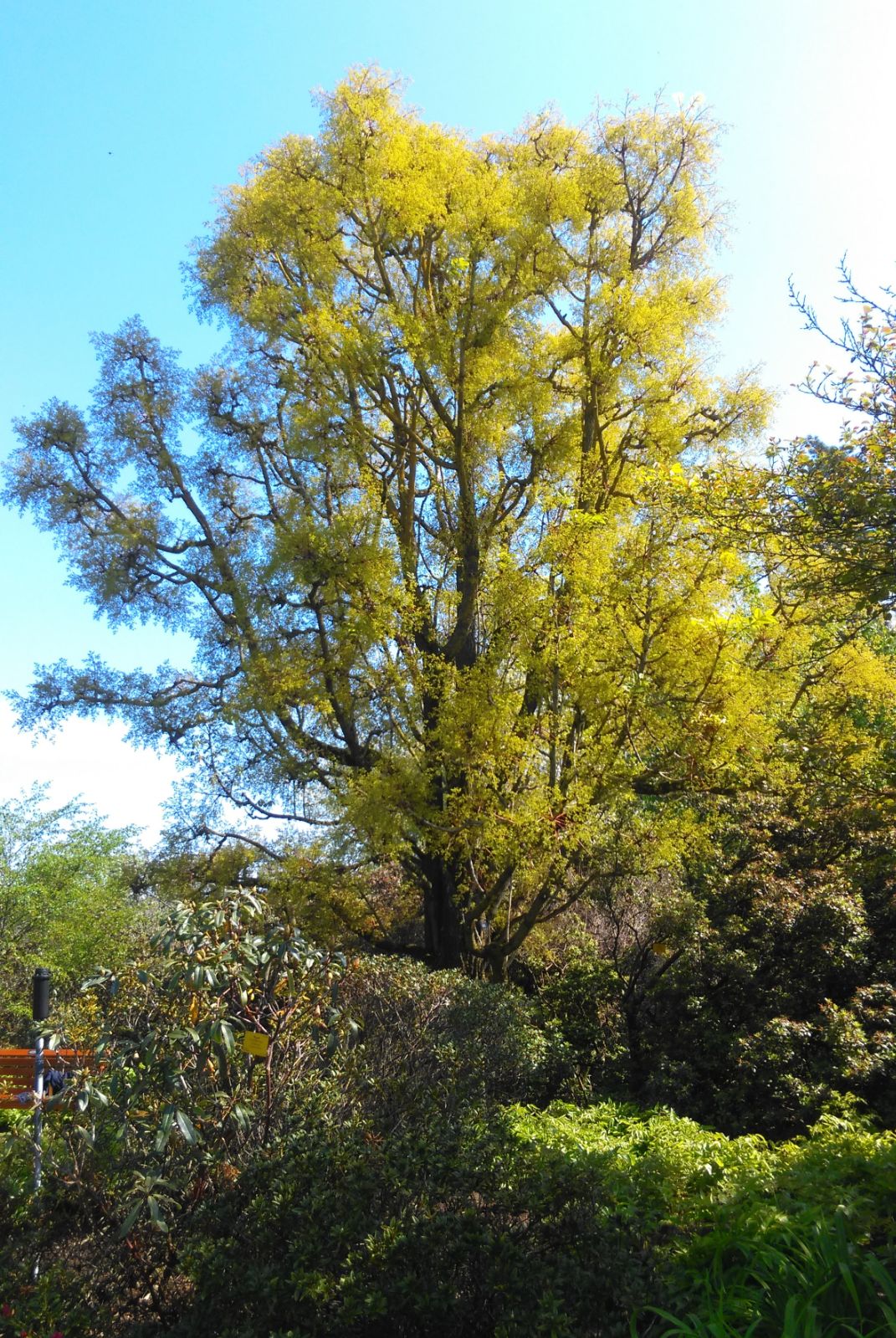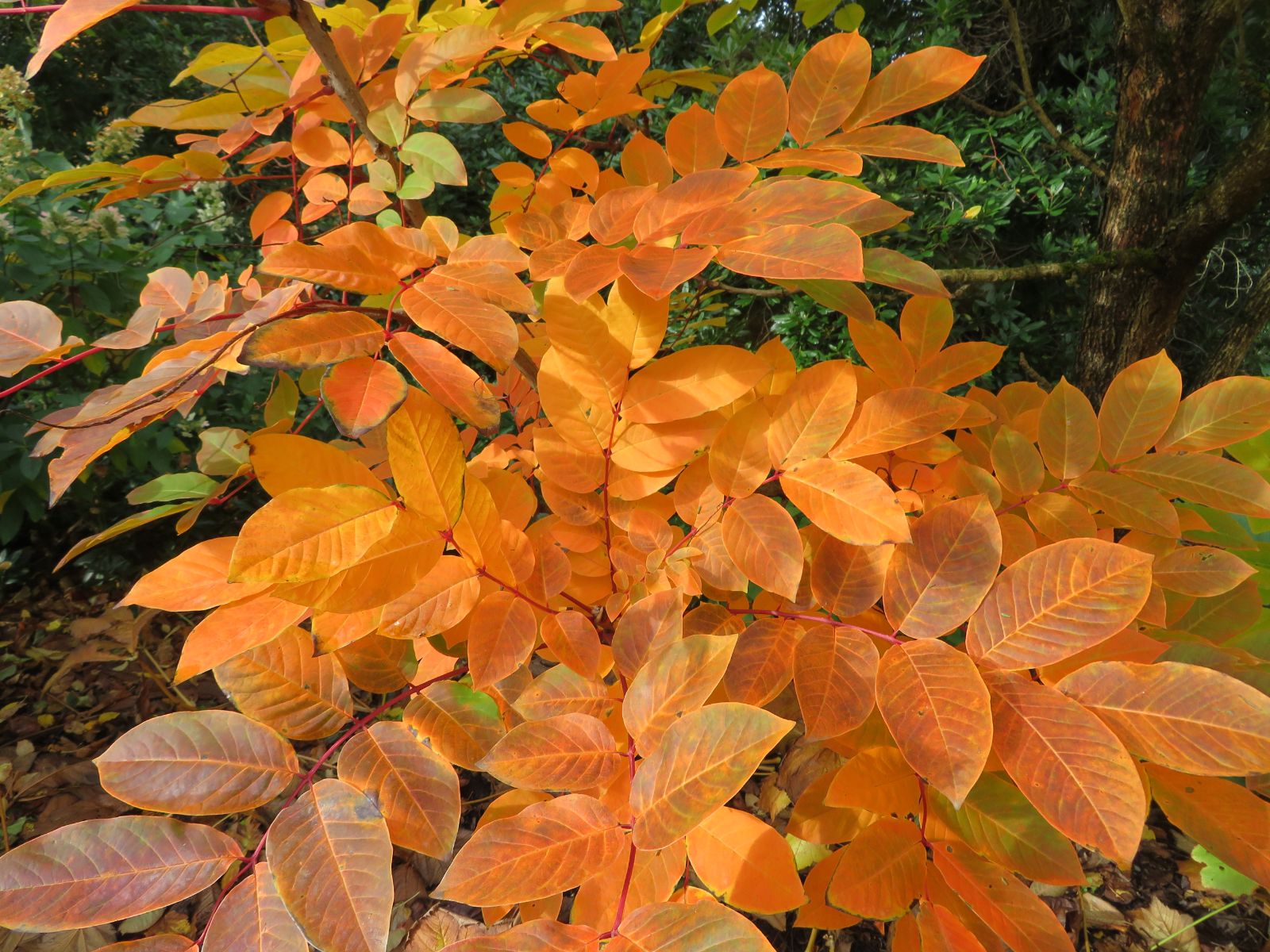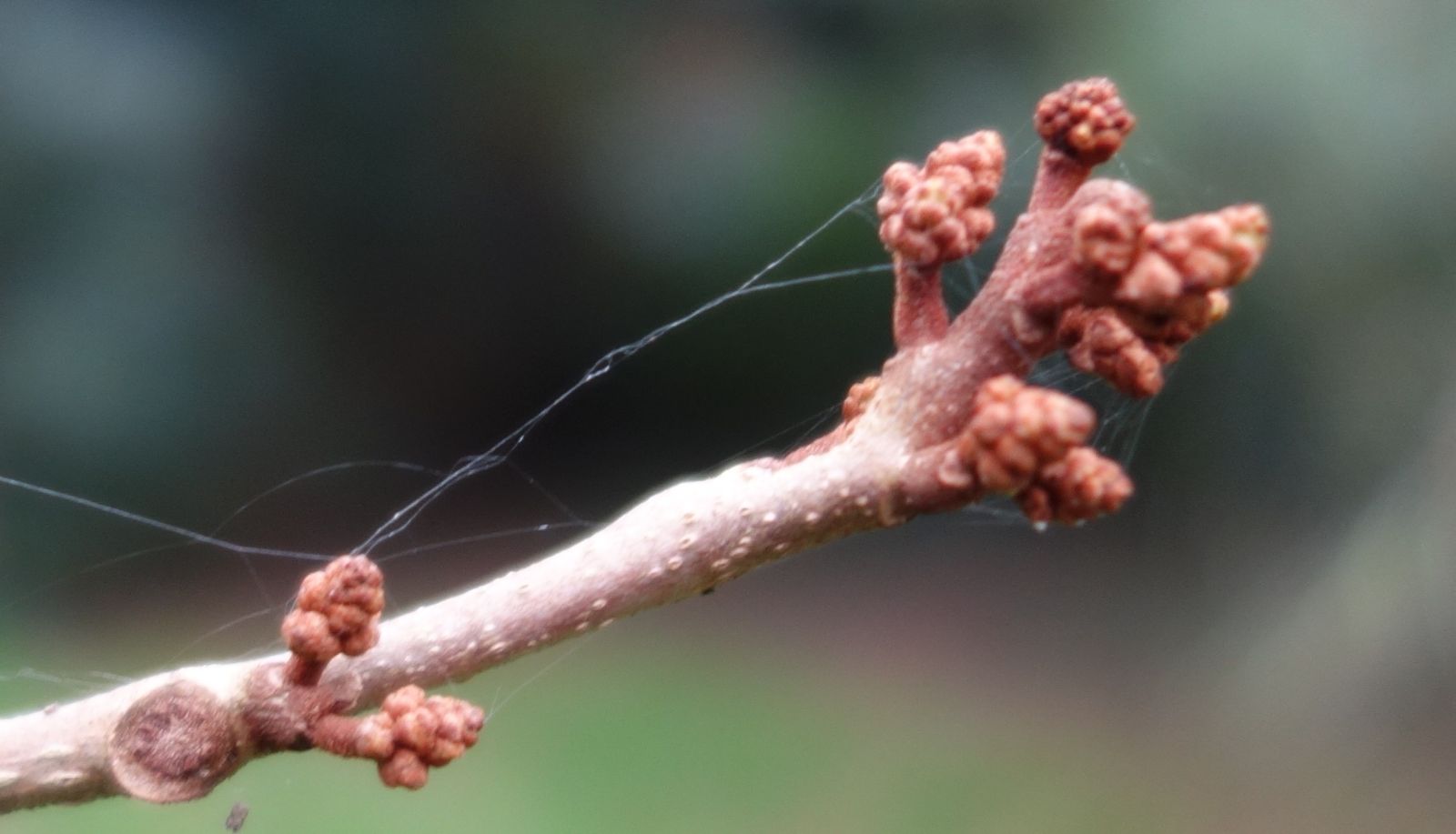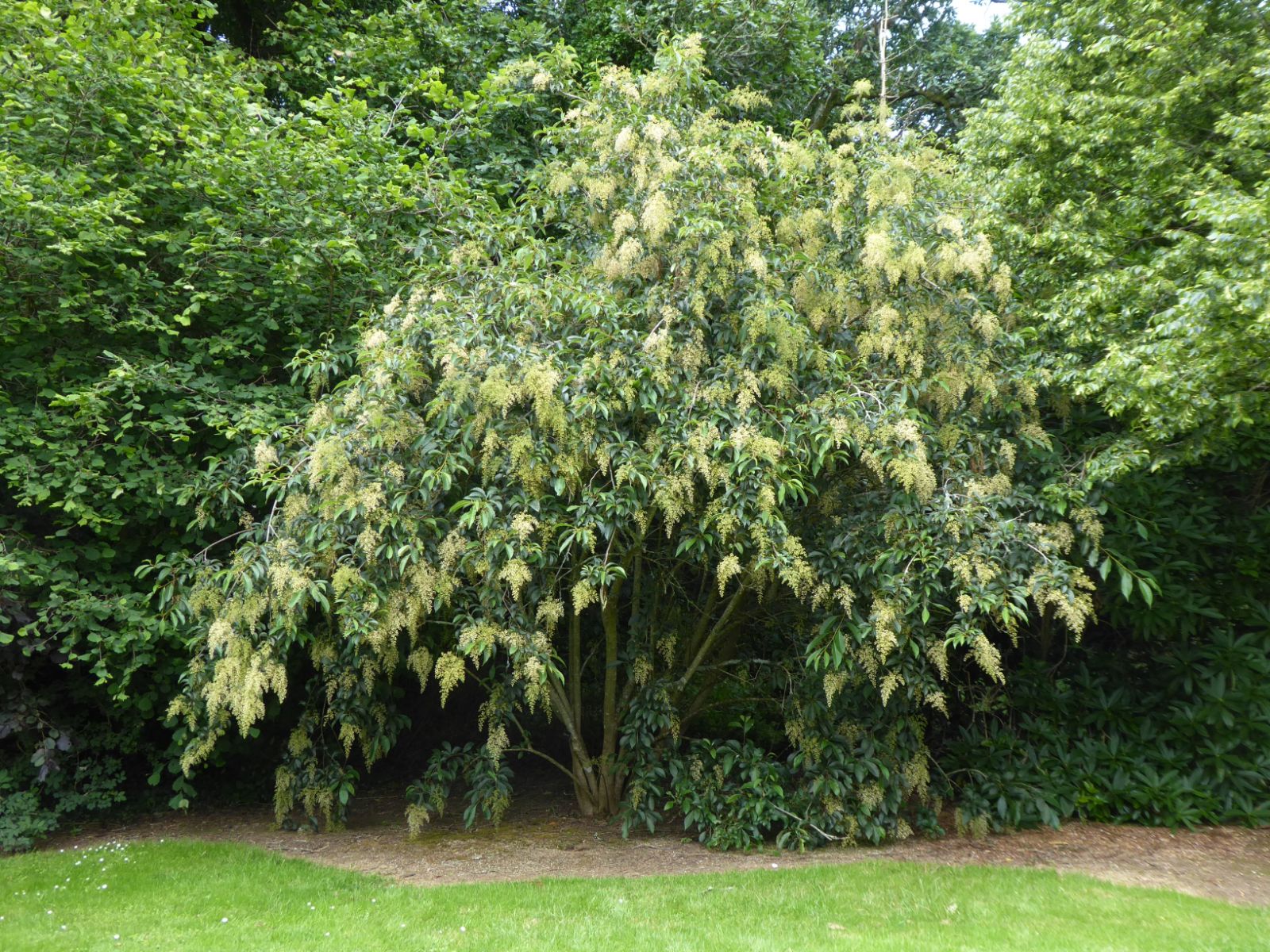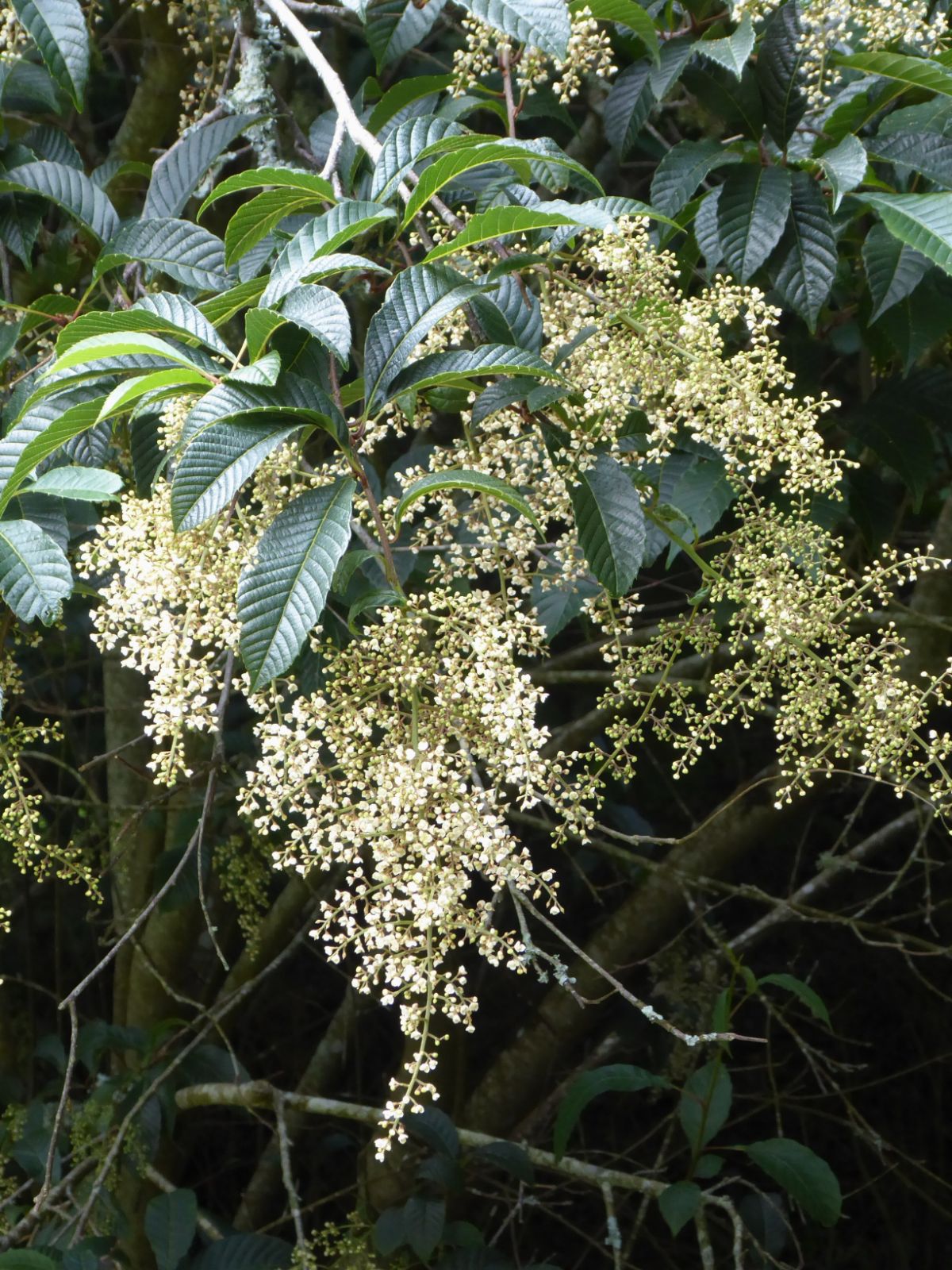Meliosma
Sponsor
Kindly sponsored by
Lady Diana Rowland
Credits
Owen Johnson (2022)
Recommended citation
Johnson, O. (2022), 'Meliosma' from the website Trees and Shrubs Online (treesandshrubsonline.
Family
- Sabiaceae
Common Names
- Worm-head Trees
- Bubble Flowers
Synonyms
- Millingtonia Roxburgh
- Kingsboroughia Liebm.
- Wellingtonia Meisner
Trees and shrubs, evergreen or deciduous. Twigs with conspicuous lenticels; buds alternate to subopposite, naked, covered in brownish wool. Leaves simple or compound, entire, distantly toothed or serrate. Inflorescence a terminal or axillary panicle, branched up to 5 times; flowers whitish, 1–3 mm wide, hermaphrodite, usually scented. Sepals usually 5; petals 5, the 3 outer ones relatively much larger. Fertile stamens 2, usually releasing their pollen explosively. Fruit a small drupe with one globose stone. (van Beusekom 1971; Guo & Brach 2007).
As the botanical description may indicate, Meliosma is one of those genera which lacks an obvious and distinctive signature. All of its species carry quite showy plumes of whitish, scented, rather Astilbe-like blossom, followed by white, red, purple or black ‘berries’ (although in cultivation they may prove shy to flower). But they can be large trees, or shrubs which continually produce new stems from the base. The bark can be smooth or rugged, or, in the case of the Chinese M. parviflora, can flake in attractive colours. The leaves can be compound and suggest a walnut, or simple and more hornbeam-like; they can be deeply toothed or entire, deciduous or evergreen, matt or glossy. The flowers can open before the leaves in spring, or among them in summer. This general sense of elusiveness is compounded by the scarcity of the genus in cultivation: about a dozen species are represented in western gardens – each of them having apparently reached southern England first – but none is remotely common and most are confined to just a few collections.
The genus is in fact a big one, and largely tropical in distribution. Recent estimates suggest that the total number of species exceed a hundred (Zúñiga 2015); Plants of the World Online (Plants of the World Online 2022) accepts 124, and taxa continue to be described from the cloud forests of central America, where diversity seems greatest. They are generally placed within the family Sabiaceae, though some authorities recognise Meliosmaceae Endl. as a family containing Meliosma plus its closest ally, the smaller south American genus Ophiocaryon (Zúñiga 2015). Few genetic analyses of this group have so far been published, but one recent study (Yang et al. 2018) has indicated that two taxa traditionally placed within Meliosma, M. alba (Schltdl.) Walp. from Mexico and M. beaniana Rehd. & Wils. from central China, could be less closely allied to the rest of Meliosma than is Ophiocaryon itself. As a result, nomenclatural fashion may come to favour the use of the generic name Kingsboroughia Schltdl. for these two taxa, but as of 2022 this change had not been adopted by Plants of the World Online (Plants of the World Online 2022), the resource whose nomenclature is followed in this account. M. beaniana at least is in cultivation in Europe; see that species entry for a further discussion of this issue.
Meliosma beaniana is one of the species which bears pinnate, somewhat walnut-like leaves. The distinction in Meliosma between simple- and compound-leaved taxa offers probably the most visually obvious way of subdividing the group, and provided the basis for the original division into Sections Simplices Warb. and Pinnatae Warb.; even before the advent of phylogenetics, however this system was seen to be an artificial one (van Beusekom 1971). A more meaningful way of splitting the genus is to separate evergreen and deciduous forms; apart from M. alba, all the deciduous species come from temperate parts of east Asia and, of these, the simple-leaved ones tend to have serrated leaves with numerous, neatly parallel veins; nearly all are in cultivation in the west. The evergreen species, which are much more numerous, all have simple leaves whose veins tend to curve inwards and often do not reach the margin, which is distantly toothed or entire. The latter group is native to warm temperate or tropical forests and the single taxon to be relatively well established in cultivation – though only in Cornwall – is M. yunnanensis Franch., a small tree whose distribution extends from the central Himalaya to southern China. Separating all of these evergreen forms, as so often in botany, depends on minute floral characteristics, but as the individual blooms of all Meliosma are so tiny this is a subject with which few gardeners are likely to engage.
One peculiarity shared by nearly all Meliosma – including M. alba – is the explosive way each mature flower sheds its pollen when lightly touched (Zúñiga 2015). This mechanism, which has evolved independently within a number of plant genera, is understood to be a means of attaching pollen to the insects (bees) which visit the flower, without allowing the bee to harvest the protein-rich pollen (Wong Sato & Kato 2018). Wong Sato and Kato, however, observed that pollen-gathering bees had largely learnt not to visit the flowers of the Japanese M. tenuis. Perhaps for this reason, many Meliosma tend to be scarce plants in the wild (van Beusekom 1971). Plants of M. beaniana, M. flexuosa, M. oldhamii and M. veitchiorum grown in gardens in England, far from other representatives of their species, sparingly produce fertile seed (van Beusekom 1971; J. Anderson and N. Macer pers. comms. 2022) and it is speculated that some Meliosma in the wild are more often likely to reproduce apomictically than sexually. When apomixis becomes the only means of reproduction, the result is a mass of distinct, stable microspecies, and that may have been an engine behind the development of large numbers of closely allied taxa in this genus (van Beusekom 1971).
The Dutch botanist Frits van Beusekom published the only monograph on the Asiatic Meliosma in 1971 (van Beusekom 1971). (More recently, the New World taxa have been covered, conservatively and in Spanish, by J. Francisco Morales (Morales 2013).) Van Beusekom attempted to indicate the close relationships within the genus by renaming most of the Asiatic taxa according to a complicated arrangement of subspecies and varieties – something no taxonomist is likely to have done could they have guessed that their assumptions might be fact-checked, within a generation, by the hard science of phylogenetics. In the absence, as yet, of many cladistic studies of the genus, modern references such as Guo & Brach (2007) and Plants of the World Online (Plants of the World Online 2022) have largely dismantled van Beusekom’s work and reverted to a simple, traditional system of binomial names, although in 2022 the Royal Horticultural Society (Royal Horticultural Society 2022) continued to support the use of van Beusekom’s taxonomy. The nomenclature recommended by Plants of the World Online – and followed here – is now almost the same as that adopted forty years ago in the eighth edition of Trees and Shrubs Hardy in the British Isles (Bean 1981).
One side-effect of the fallout from the nomenclatural instability introduced by van Beusekom’s monograph has undoubtedly been to make this genus even less familiar to western gardeners and more confusing that it should be. Faced with a name like Meliosma pinnata subsp. arnottiana var. oldhamii (Maxim.) Beusekom, many a plant-lover must have despaired of keeping pace with taxonomic fashion (or of finding a label large enough). The members of the genus hardy enough to grow in Europe and temperate North America are not, in fact, a particularly difficult group to get to grips with: the very polymorphy of the genus offers plenty of memorably distinctive features, and many of these features also make for uniquely desirably garden trees and shrubs. The fact that so many cultivated Meliosma have turned out to have been mislabelled tells us less about the distinctiveness of these species than it does about the reluctance of most gardeners and nursery-owners to identify their plants by referring to the available source texts, rather than accepting the name on the label uncritically.
Meliosma is certainly still too unfamiliar a genus to have acquired a good vernacular name. The extraordinary, ugly ‘worm-head tree’ is sometimes encountered in North America, and apparently refers to the naked winter buds of the deciduous taxa which can resemble a huddle of worms (Mosquin 2014; Grimshaw & Bayton 2009). ‘Wedge-leaved bubble flower’ has also been concocted (for M. cuneifolia Franch.), but neither name seems calculated to turn these trees into must-haves at the local garden centre. ‘Gogun tree’ was published by Keith Rushforth (Rushforth 1999); gogun is the Nepali name for M. dilleniifolia Walp., and should probably be restricted to that species. Blume’s generic name, from 1823, means ‘honey-scented’ – describing the flowers – and might suggest the promotion of some such vernacular derivative as ‘honey trees’.
The scarcity of Meliosma in cultivation could be taken to indicate that these are not particularly easy plants to grow, and certainly makes it harder to define with confidence what conditions each taxon does prefer. Largely through historical accident, nearly all of the oldest plants grow in mild gardens in England and Wales, and this may have contributed to a general idea that even temperate representatives of Meliosma are rather tender. In more recent decades, a variety of species have been established in the slightly colder conditions of the David C. Lam Asian Garden of the University of British Columbia in Vancouver, Canada (Mosquin 2014), while Barry Yinger has experimented successfully with several kinds in the much more continental climate of Brookside Gardens in Pennsylvania (Stewart 2022); some species, including in particular the Japanese M. tenuis Maxim., are likely to be very hardy. Nevertheless the genus remains absent in its entirety from the definitive American Manual of Woody Landscape Plants (Dirr 2009).
In cultivation in the UK and Ireland, many individual Meliosma do give the impression of not looking entirely comfortable, though the sizes which most taxa have attained still tend to compare well with the maximum stature reported from the wild. Many cultivated plants fail to bloom reliably, though the reasons are likely to vary from species to species. Early-summer warmth and sunshine are likely to promote flowering, though Meliosma in general are woodland plants which avoid full sun and expect plenty of rainfall or humidity through the growing season. In the UK in particular, the genus is just finding its way into the catalogues of specialist nurseries, with seven or eight taxa reprensented in recent editions of The Plant Finder (Royal Horticultural Society 2020). These taxa, and others, have such a variety of attractive features – elegant foliage, showy and scented flowers, colourful fruit, and good autumn colour – that they will surely, slowly, become more widely familiar as garden plants.
Since the great majority of Meliosma species are not known at all to temperate gardeners, the boundaries of this genus in cultivation are unusually hard to define. A history of nomenclatural instability has not helped, but the horticultural community has itself compounded this problem by coming up with its own assortment of mangled or unpublished names such as ‘M. meliantha’ (M. myriantha, presumably) or ‘M. parvifolia’ (a corruption of the name M. parviflora which originated at the Royal Botanic Gardens, Kew (Bean 1981)). It is impossible to guess at the true nature of, for example, the ‘M. splendens’ offered around 2010 in Germany and the Netherlands (garten-pur.de 2010), or the nine-metre ‘M. gibbsii’ at the Sir Harold Hillier Gardens in 1967 (Tree Register 2022), or the 11-metre tree at Mount Congreve in Ireland measured in 2003 as ‘M. eggllstonii’ (sic) (Tree Register 2022). M. rigida Sieb. & Zucc., an evergreen tree with a wide distribution in warm-temperate forests in east Asia, gained a place in New Trees (Grimshaw & Bayton 2009) (as van Beusekom’s synonym M. simplicifolia subsp. rigida) on the basis of a single tree at Tregrehan in Cornwall which had been received under this name in 1997 from the Qingpu Paradise Horticultural Company (QPH 97–167). This tree survived in 2022 (T. Hudson pers. comm.) but it is deciduous and does not resemble M. rigida; it is either M. myriantha or an undescribed ally (J. De Langhe pers. comm.). Another subspecies of M. simplicifolia, subsp. pungens (Walp.) Beusekom, also featured in New Trees: an old tree at Caerhays Castle in Cornwall was for a long time believed to represent this taxon, but in 2022 was re-identified as M. yunnanensis by Frits van Beusokom and Jan De Langhe (J. De Langhe pers. comm.) A few other trees in the UK which have been named as M. dilleniifolia subsp. pungens are assumed in this account all to be sister-plants or scions of the Caerhays M. yunnanensis.
A third of these east Asian evergreen taxa, M. dumicola W.W. Sm., is included in this account on the basis of young plants at Tregrehan and at Caerhays Castle, also in Cornwall (T. Hudson pers. comm. 2022; (Williams 2022). M. dentata (Liebm.) Urb., a species widespread in central America, is also included here thanks to its cultivation at Tregrehan; this is probably the first New World Meliosma to be grown out-of-doors in Europe or in temperate North America. (Seed of M. cordata A.H. Gentry, a tropical species described from Panama in 1981, was also available in 2022 from rarepalmseeds.com.)
A key to Meliosma in cultivation by Jan De Langhe was published online by the Ghent University Botanical Garden in 2022 (De Langhe 2022) and is freely available. The alternative key below, which is indebted to De Langhe’s work, offers a simplified, layperson’s guide to the group.
Identification key | ||
| 1a | Leaf compound | 2 |
| 1b | Leaf simple | 4 |
| 2a | Petiolule of terminal leaflet distinctly jointed near the tip; leaflets ovate, often large; flowers in late spring | 3 |
| 2b | Petiolule of terminal leaflet not jointed; leaflets lanceolate, less than 4 cm wide; flowers in summer | Meliosma oldhamii |
| 3a | Leaflets with tufts of hair under the vein axils; leaf 15–35 cm long | Meliosma beaniana |
| 3b | Leaflets lacking axillary tufts; leaf 60–90 cm long | Meliosma veitchiorum |
| 4a | Leaf evergreen, leathery; veins curving in and not reaching the margin, which is remotely toothed or entire | 5 |
| 4b | Leaf soft, deciduous; veins regularly running to the margin to serve a tooth | 7 |
| 5a | Leaf with tufts of hair under the vein axils | Meliosma simplicifolia |
| 5b | Leaf lacking distinct axillary tufts | 6 |
| 6a | New World species; veins in 8–13 pairs | Meliosma dentata |
| 6b | Old World species; veins in 7–10 pairs | Meliosma dumicola |
| 7a | Flower-head hanging, with zig-zag stems; leaves lacking tufts of hair under the vein axils | Meliosma flexuosa |
| 7b | Leaves with distinct axillary tufts; flower-head erect to drooping, with straight to slightly zig-zag stems | 8 |
| 8a | Marginal teeth 2 for each vein that reaches the leaf margin | Meliosma dilleniifolia |
| 8b | Usually just one marginal tooth per vein or tributary vein | 9 |
| 9a | Leaf broadest near the tip, long-tapered to the base | 10 |
| 9b | Leaf broadest well below the tip | 11 |
| 10a | Leaf obovate with a short sudden point; margin with undulate serration; mature bark flaking colourfully | Meliosma parviflora |
| 10b | Leaf tapering narrowly and evenly to the base from well above halfway; margin plane, with large teeth; mature bark smooth and grey | Meliosma cuneifolia |
| 11a | Fruit red; flowers bright white, in an erect head; leaf rather ovate | Meliosma myriantha |
| 11b | Fruit black with a purple bloom; flowers dull white, in a drooping head; leaf rather obovate | Meliosma tenuis |

